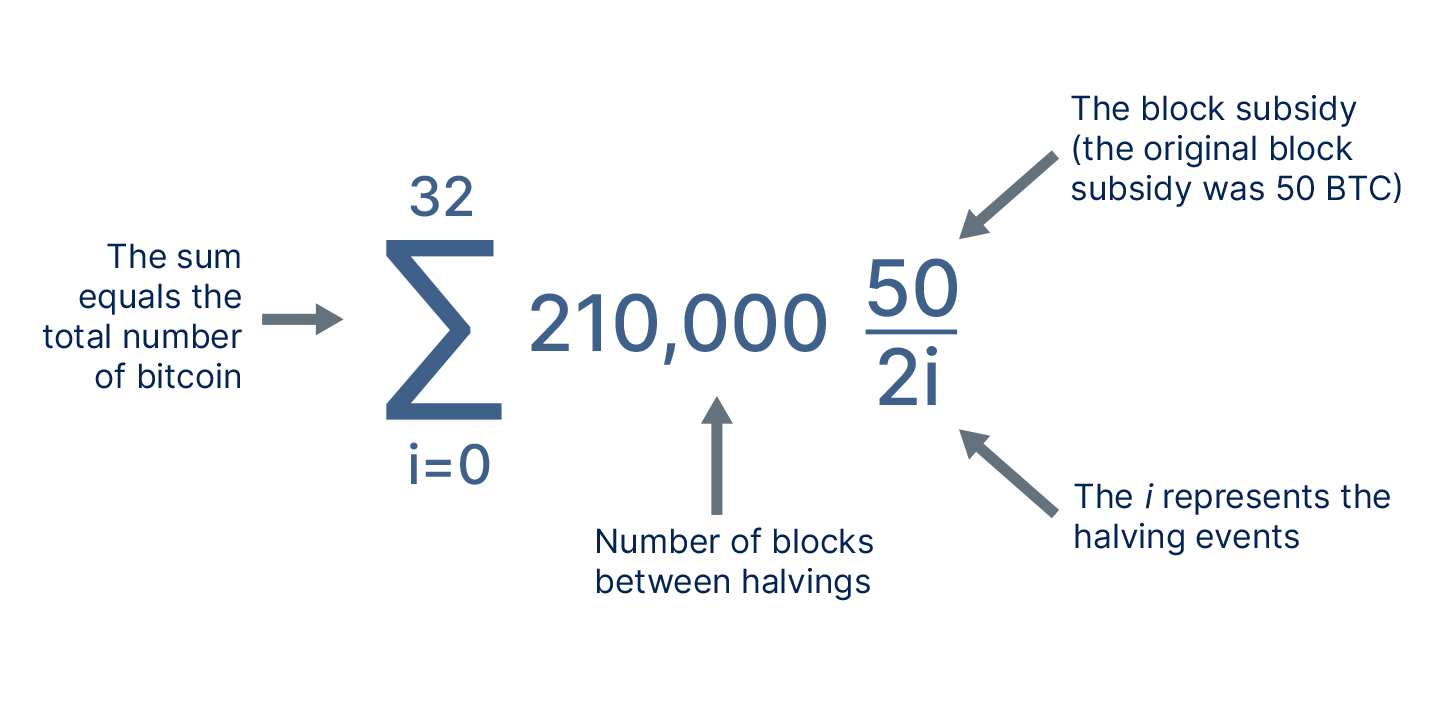The limit of 21 million Bitcoins is a fundamental part of Bitcoin’s protocol, the set of rules that define the Bitcoin network. This limit is hardcoded into Bitcoin’s source code and is a key feature that contributes to its value proposition as a digital form of scarce, decentralized money. Here’s how it’s ensured:
Design
Bitcoin’s creator, Satoshi Nakamoto, set the maximum supply of Bitcoin to 21 million when they created the Bitcoin protocol. This decision was part of Bitcoin’s original design to mimic the scarcity and deflationary aspects of precious metals like gold.
Block Reward Halving
Bitcoins are created through a process called mining, where miners validate transactions and add them to the blockchain. As a reward, they receive newly created Bitcoins. This reward halves approximately every four years in an event known as “halving.” This halving process reduces the rate at which new Bitcoins are created and ensures that the total supply will gradually approach 21 million.
Mathematical Limitation
The halving process will continue until the mining reward becomes so small that it rounds down to zero. The design of the Bitcoin protocol ensures that this will occur once 21 million Bitcoins have been issued, which is expected to happen around the year 2140.

Protocol Governance
Changing the 21 million limit would require a consensus among the network participants (miners, developers, users). This kind of change would be a fundamental alteration to the Bitcoin protocol and is widely regarded as highly unlikely due to the strong commitment of the Bitcoin community to the original principles of Bitcoin.
Economic Incentives
The 21 million cap is a critical aspect of Bitcoin’s value proposition. Altering this limit would undermine the trust and credibility Bitcoin has established as a form of digital gold. The economic incentives for keeping the cap are therefore very strong.
In summary, the 21 million cap on Bitcoin is not just a feature of the software; it’s a core part of Bitcoin’s identity and value proposition. Changing it would require overwhelming consensus among network participants, which is unlikely given the economic and philosophical implications.
Calculation of the limit
Sum of the Series: To calculate the total number of Bitcoins that will ever exist, you sum the number of Bitcoins produced in each cycle.
First cycle: 50 BTC/block for 210,000 blocks = 10,500,000 BTC Second cycle: 25 BTC/block for 210,000 blocks = 5,250,000 BTC Third cycle: 12.5 BTC/block for 210,000 blocks = 2,625,000 BTC (CURRENT)




